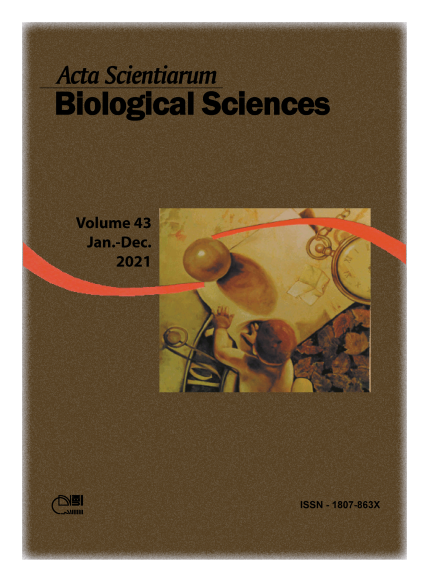Antinociceptive and anti-inflammatory effects of cellular and extracellular extracts from microalga Chlamydomonas pumilioniformis on mice
Abstract
Microalga species have attracted interest as a source of bioactive compounds with several pharmacological activities. Previous studies reported that microalgae from the genus Chlamydomonas have anti-inflammatory and antioxidant properties. In this study, antinociceptive and anti-inflammatory activities of two extracts from microalga Chlamydomonas pumilioniformis were investigated. Cellular and extracellular extracts were prepared from a 14 day-batch culture in WC medium at the end of exponential growth and their carbohydrate contents were determined. Antinociceptive effects of extracts were evaluated by writhing and formalin-induced nociception tests, while the anti-inflammatory activity was analyzed by formalin-induced paw edema in mice. The analysis of dissolved carbohydrates detected amounts of 90 and 20 µg mL-1 of total carbohydrate in cellular and extracellular extracts, respectively. Cellular extract was mainly composed of glucose, but with significant proportions of arabinose, galactose and mannose and/or xylose and minor ones of fucose, rhamnose, amino sugars and uronic acids. Extracellular extract was composed of a similar proportion of glucose, galactose and mannose/xylose, besides significant ones of arabinose, fucose and galacturonic acid. Intraperitoneal administration of extracts significantly reduced writhing response in mice. In the formalin test, the extracellular extract inhibited both formalin phases, while the cellular extract was only effective in the late phase. Furthermore, extracts reduced the formalin-induced paw edema. In sum, we showed, for the first time, that C. pumilioniformis can be an important source of polysaccharides with anti-inflammatory and antinociceptive effects.
Downloads
DECLARATION OF ORIGINALITY AND COPYRIGHTS
I Declare that current article is original and has not been submitted for publication, in part or in whole, to any other national or international journal.
The copyrights belong exclusively to the authors. Published content is licensed under Creative Commons Attribution 4.0 (CC BY 4.0) guidelines, which allows sharing (copy and distribution of the material in any medium or format) and adaptation (remix, transform, and build upon the material) for any purpose, even commercially, under the terms of attribution.
Read this link for further information on how to use CC BY 4.0 properly.












1.png)




3.png)













